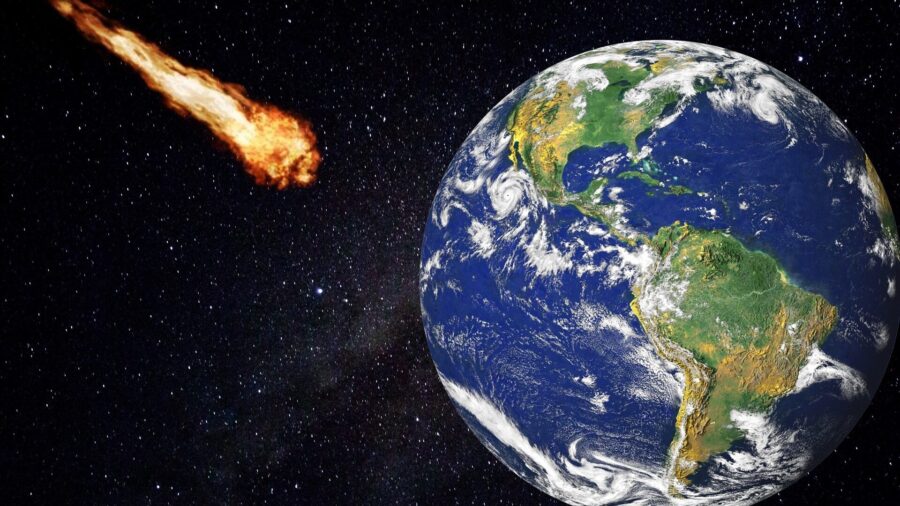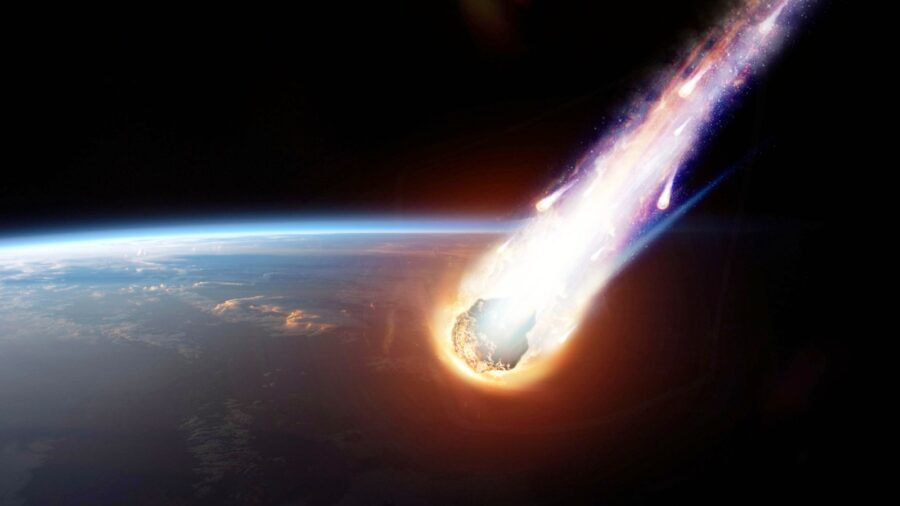Massive Asteroid Is About To Speed Past Earth, Dangerously Close
An asteroid is projected to come as close to Earth as The Moon.

The path of an asteroid will soon be coming nearly as close to Earth as our Moon’s orbit. Though some consider a collision with an asteroid more likely and more dangerous than we think, scientists are certain this one will pass us by. Even when objects come much closer to us than this one, they tend to burn up in our atmosphere in an awesome blaze.
As Newsweek reports, the asteroid is considered an NEO (Near Earth Object) and will pass our planet on Wednesday with extraordinary closeness, about 1.1 lunar distances. That means that when it comes closest to us, it will be 1.1 times as far away as the Moon’s orbit. For more accurate numbers, but perhaps slightly less relatable perspective, the Moon is around 238,900 miles away, and the asteroid will zip by as close as approximately 262,790 miles.
The classification of this asteroid as an NEO means it will come within 30 million miles of us, a designation NASA has so far given to some 31,000 objects. At just 42 feet wide, the object—known as 2023 HV5—is not large enough for the space agency’s sub-classification of “potentially hazardous,” which just means that an object’s path might eventually impact Earth in future centuries.
Were it larger—say, the size of a skyscraper—it could possibly pose more of a threat, but the Center for Near-Earth Object Studies (CNEOS) at NASA estimates its probability for collision at 0.00024.
Though yesterday’s Star Wars Day has us thinking, “Never tell us the odds,” we’re actually quite relieved to know that particular numerical reality. Only 2,300 potentially hazardous objects have so far been spotted. To qualify for this designation, an object must be projected to come within 4.6 million miles of Earth and have a diameter of more than than 460 feet.
The asteroid 2023 HV5 is within that possibly dangerous range but not nearly large enough to pose a threat.

An asteroid swarm is a much more ominous scenario, though that’s not likely to happen anytime soon. Plus, scientists have more tools at their disposal now than ever to detect and even deflect any object that might become planet-threatening. For example, the recent DART (Double Asteroid Redirection Test ) mission successfully altered the course of an asteroid by smashing a satellite into its surface, making us all feel a little safer.
That asteroid, named Dimorphos, was orbiting its parent asteroid, Didymos, at a rate of 11 hours and 55 minutes before NASA intervened with the DART impact, which reduced the orbit time by 32 minutes, lowering it to 11 hours and 23 minutes. This was more that 25 times the test’s minimum benchmark, making the project a huge success. Altering the course of such objects is our best bet at avoiding catastrophe, as destroying them just makes lots of smaller objects which, as we mentioned, could pose an even greater threat.
It’s easy to imagine an asteroid smashing into our planet and causing major upheaval, as has probably happened at least once in our distant past, but with new tracking and deflection technologies, we can not only have a much better idea of the present situation regarding NEOs, but a much better chance of handling potentially hazardous ones in the future.
While that future is likely quite distant, space scientists think in long time spans because experimentation, research, and development take years. They don’t just want to be ready now, but also to help safeguard our planet for future generations.












